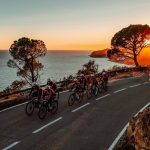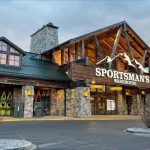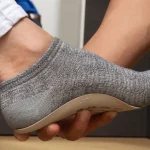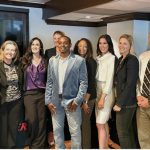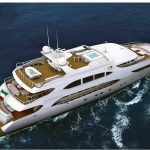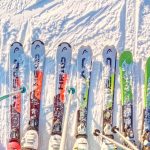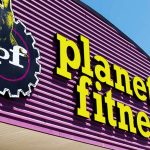Mike Gotfredson founded Road Runner Sports in a garage in Del Mar, CA in 1983, using his direct marketing experience. The company doubled in size nearly every year through 1999. Road Runner Sports sells more technical running shoes than any other retailer or cataloger in the U.S. and is the largest running shoe customer for each of its manufacturers. Mike is a member of The Executive Committee and is on the Board of the Athletes Helping Athletes Foundation.
Mike has coached his three sons and one daughter for over 15 years in baseball and soccer. He has run in the New York Marathon and regularly runs 20 miles per week. He also has a weekly routine of serious stretching and weight training. Mike frequently enjoys a good round of golf, and likes a few hours each week on the tennis court and surfing.
SEW: So Mike, how did you get started?
MG: In 1982 I was laid off from Sperry Univac, along with 400 other people, and I had three children and a fourth on the way. I went out to buy my second pair of running shoes — I was literally running 30 minutes a week — and this small Second Sole shop here in San Diego wanted $35 for a pair of Brooks and I thought that was outrageous at the time.
Being that I had spent my entire life in direct marketing I thought it would be a great idea to sell shoes on a national basis at a deep discount. To do my market research, I got in a plane and flew to five cities: New York, Atlanta, Chicago, Denver, and Seattle. In each city I went to as many sporting goods stores as I could in a day. Nobody was discounting running shoes in the U.S. in 1982.
To begin, I put a one inch by three inch ad in the back of Runners World advertising the five best running shoes at the time, and I was off and running. The catalog didnt evolve until late 1984. And that was just a little fold-out printed front and back; you wouldnt call it a catalog today. I maybe shipped five or six thousand.
SEW: How many catalogs do you ship today?
MG: Well do close to 19 million catalogs a year and upwards of 80 to 90 million e-mails plus another 5 million other sundry notifications.
SEW: The model sounds like it was built on discounting shoes, but today you seem to be known much more for service and selection. When did that shift occur?
MG: I knew from the very beginning that price was only one aspect, but you have to have outstanding customer service. We always had a caring for the customer first plan here and that really carried us through thick and thin.
The price issue is really a result of the manufacturers, the fact that they have clamped down on anyone that doesnt sell at what they call market pricing. And they have really done a pretty good job of cleaning up most of the discounting up until the last two or three years when we saw the advent of the BOGOs.
SEW: You used to describe your business as more of a database marketing business more than a running specialty business, has that changed over the years? How has it changed?
MG: No, it still is. From the beginning, to the outside world we are a running company. We talk running, we act running, and we are running. But internally we are a high tech database information organization and we know everything about a customer who has purchased anything from us. In addition to the usual information most companies gather, we know what shoe he wore, what size and what color; how much he runs; we know what he has bought each time.
For instance, we know that last year 14% of our business was generated by customers that came on our file in 1989. We know what their lifetime value is, how much we spent marketing to each one, and how profitable each was for us.
We can also bring up a list of all customers that bought an Asics Gel Kayano IX and give them fair notice that that shoe is being replaced by the Gel Kayano X. We will buy an extra 10,000 to 20,000 pair and theyll be gone in five days.
Our database is our crown jewel. That is the value of Road Runner Sports.
SEW: So now youve entered brick and mortar retail for the first time. How has that progression worked and was that a natural next step in your growth?
MG: We have been profitable from day one in our Internet business and the move to retail has been much the same. We have a warehouse with 250,000 shoes in it and consumers would just come up and purchase shoes. So retail has always been profitable. But since we added this 5,000 square foot store here, and have this tremendous location on the freeway, we will do more than $11 million in this one retail location.
We decided our next step would be a simple one, again leveraging our customer data file, and building these Super Running Centers near our customers. People think were new to Seattle because we opened a 10,000 square foot store there, but were not. We have 12,000 customers in a 75 mile radius from the store that have been buying from Road Runner for a long time. We will decide on location for stores based on our customer information.
SEW: What plays into your decision on where to go?
MG: We looked at three cities; Seattle, Chicago and San Francisco. We would have gone to any one of them the other cities have far more customers than Seattle — but we couldnt find as perfect a location as we did in Green Lake. Its at the epicenter of where are customers are in the Seattle area.
SEW: Where do you see your retail model expanding from there?
MG: I see 20 to 30 Super Running Centers around the U.S in the next five years, all based where our customer already is located. We may find that its too aggressive or not aggressive enough and thats why we started by opening one.
SEW: Do you see the 10,000 square foot model as the model of the future versus the 5,000 square foot model in San Diego?
MG: Actually, the Seattle store has 6,000 square feet of selling space. San Diego is able to use the existing warehouse. Our goal is not to be out of stock. If we are, we will ship it to you overnight to your home.
SEW: What major changes have you seen in the running business over the last few years?
MG: There are two things that I see as major changes in the business. One is the total acceptance of treadmill running. There are 15 million to 17 million treadmills out there today. Used to be, we couldnt give away a shoe in November, December, or January. Were a much more year round business now.
The second is the emergence of women running for a cause such as breast cancer and that has done a phenomenal job of bringing new beginner runners into the sport. Thats where we see the biggest change. Most of these new women runners dont see themselves as much as hardcore runners — even though they have run a marathon — and thats why we developed the new Activa womens catalog for women — its now a $15 million business — and another reason why we have moved into retail.
SEW: How big is the total business today?
MG: The total business will be $120 million this year. Mens is roughly 55% and womens is 45% of the business. Kids is a non-issue.

